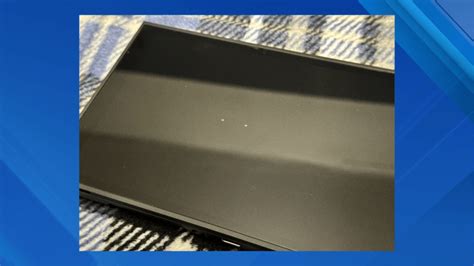
Plugging your phone into a public USB charging station at the airport could expose your data to hackers, warns the Transportation Security Administration (TSA), urging travelers to use alternative charging methods to avoid “juice jacking.”
The TSA is cautioning travelers about the dangers of “juice jacking,” a cybersecurity threat where public USB charging stations are compromised to steal data from connected devices. This warning comes amidst growing concerns about the security of public charging infrastructure and the increasing sophistication of cybercriminals. Travelers are advised to use alternative charging methods, such as AC power outlets or portable power banks, to protect their personal information.
“Juice jacking” is a type of cyberattack that exploits USB charging ports to install malware or steal data from mobile devices. When a user connects their phone to a compromised USB port, malicious software can be installed without their knowledge, allowing hackers to access sensitive information such as passwords, financial data, and personal contacts. The TSA’s warning highlights the increasing prevalence and sophistication of these attacks, emphasizing the need for travelers to remain vigilant and take proactive measures to safeguard their data.
According to the TSA, public USB charging stations, often found in airports, hotels, and other public places, can be easily modified to include malicious hardware or software. Once a device is connected to a compromised station, the hacker can gain unauthorized access to the device’s file system, allowing them to copy data or install malware. The malware can then be used to track the user’s activity, steal credentials, or even remotely control the device.
“Plugging into a public USB port is kind of like finding a toothbrush on the side of the road and deciding to stick it in your mouth. You have no idea where that thing has been,” said Drew Paik, a security expert with Authentic8, in a statement to Wired several years ago, illustrating the potential risks associated with using public USB ports. This analogy underscores the importance of exercising caution when using public charging stations.
The TSA’s warning aligns with previous alerts issued by the FBI and other cybersecurity agencies. In April, the Denver office of the FBI issued a similar warning, advising travelers to avoid using public USB charging stations. “Avoid using free charging stations in airports, hotels, or shopping centers,” the FBI stated. “Malicious actors have figured out ways to use public USB charging ports to introduce malware and monitoring software onto devices.”
The potential consequences of juice jacking can be severe. Stolen data can be used for identity theft, financial fraud, and other malicious purposes. In some cases, hackers may even use the compromised device to access corporate networks or other sensitive systems. For travelers who rely on their mobile devices for work or personal communication, the risk of juice jacking is particularly concerning.
To mitigate the risk of juice jacking, the TSA recommends several alternative charging methods. The most secure option is to use an AC power outlet and a personal charger. This ensures that the device is only connected to a trusted power source. Another option is to use a portable power bank, which can be charged at home or in a secure location and then used to charge devices on the go.
Travelers should also be wary of accepting prompts on their devices when connecting to a USB port. If a device prompts the user to allow data transfer or install software, it is best to decline the request. Additionally, it is advisable to keep devices updated with the latest security patches and to use a strong password or biometric authentication to protect against unauthorized access.
Cybersecurity experts also recommend using a USB data blocker, which is a small adapter that prevents data transfer while allowing the device to charge. These adapters can be purchased online or at electronics stores and are an effective way to protect against juice jacking attacks. By using a data blocker, travelers can ensure that their device is only receiving power and that no data is being transferred to or from the charging station.
The TSA’s warning underscores the importance of cybersecurity awareness and the need for travelers to take proactive steps to protect their personal information. As cyber threats continue to evolve, it is essential to stay informed about the latest risks and to adopt best practices for securing mobile devices. By following the TSA’s recommendations and taking other precautions, travelers can significantly reduce their risk of becoming a victim of juice jacking.
This is not the first time concerns about public USB charging stations have been raised. Cybersecurity experts have been warning about the dangers of juice jacking for several years. However, the TSA’s warning is significant because it comes from a government agency responsible for transportation security. This highlights the seriousness of the threat and the need for travelers to take it seriously.
The TSA’s warning also raises questions about the security of public infrastructure. While airports and other public places often provide free USB charging stations as a convenience for travelers, they may not be adequately secured against cyberattacks. This suggests that there is a need for greater investment in cybersecurity measures to protect public charging infrastructure.
Furthermore, the TSA’s warning underscores the importance of individual responsibility for cybersecurity. While government agencies and businesses can take steps to protect against cyber threats, ultimately, it is up to each individual to take precautions to safeguard their own data. This includes being aware of the risks of juice jacking and taking steps to mitigate those risks.
In response to the TSA’s warning, some airports and other public places may consider removing or modifying their USB charging stations. One option is to replace USB charging stations with AC power outlets, which are less vulnerable to juice jacking attacks. Another option is to install USB data blockers on charging stations to prevent data transfer.
Ultimately, the best way to protect against juice jacking is to avoid using public USB charging stations altogether. By using alternative charging methods, such as AC power outlets or portable power banks, travelers can significantly reduce their risk of becoming a victim of this type of cyberattack.
The TSA’s warning serves as a reminder that cybersecurity is an ongoing concern and that travelers need to be vigilant about protecting their personal information. By staying informed about the latest threats and taking proactive measures to secure their devices, travelers can help to protect themselves against juice jacking and other cyberattacks. The inconvenience of carrying a charger or portable power bank is a small price to pay for the peace of mind that comes with knowing that your data is safe. As technology evolves, so too do the threats against it, making continuous vigilance essential for safeguarding personal information. This also places a greater emphasis on manufacturers to develop devices with enhanced security features to better protect users from such vulnerabilities.
Expanding on the Risk and Mitigation Strategies
The threat of juice jacking is more than just a theoretical concern. Security researchers have demonstrated how easily public USB charging stations can be compromised. In one experiment, researchers modified a charging station to install malware on any device that connected to it. The malware was designed to steal passwords, contacts, and other sensitive information. This experiment demonstrated the potential for malicious actors to use public USB charging stations to steal data on a large scale.
Another risk associated with juice jacking is the potential for attackers to gain remote access to a compromised device. Once malware is installed on a device, the attacker can use it to control the device remotely. This could allow the attacker to access sensitive information, track the user’s location, or even use the device to launch attacks against other systems. The level of access granted through malware can be quite extensive, potentially granting control over the camera, microphone, and all stored data.
The TSA’s warning specifically targets travelers because they are often in a vulnerable position. Travelers are often in a hurry, and they may not be paying close attention to the security of the charging stations they are using. They may also be more likely to connect to a public charging station if their device is running low on battery. This makes them an easy target for cybercriminals. The transient nature of travel also makes it difficult for victims to trace the source of the attack, further complicating the recovery process.
In addition to the recommendations made by the TSA, there are other steps that travelers can take to protect themselves against juice jacking. One is to use a virtual private network (VPN) when connecting to public Wi-Fi networks. A VPN encrypts all of the data that is transmitted to and from a device, making it more difficult for hackers to intercept sensitive information. While a VPN primarily protects data transmitted over Wi-Fi, it adds an extra layer of security that can be beneficial in protecting against various cyber threats.
Another step is to disable data transfer when connecting to a USB port. Most mobile devices have a setting that allows users to disable data transfer when connecting to a USB port. This prevents the device from transferring data to the charging station, even if the station is compromised. This setting is typically found in the device’s settings menu under USB configuration or developer options.
Travelers should also be wary of suspicious behavior when using public charging stations. If a charging station appears to be damaged or tampered with, it is best to avoid using it. If a device prompts the user to install software or grant permissions that seem unusual, it is best to decline the request. A healthy dose of skepticism can go a long way in preventing a successful attack.
Businesses and organizations that provide public USB charging stations should also take steps to protect their customers. They should regularly inspect charging stations for signs of tampering and ensure that they are properly secured. They should also provide customers with information about the risks of juice jacking and how to protect themselves. Implementing regular security audits and updates can also help in identifying and addressing vulnerabilities before they are exploited.
The rise of juice jacking highlights the importance of cybersecurity awareness and the need for individuals and organizations to take proactive steps to protect themselves against cyber threats. As technology continues to evolve, it is essential to stay informed about the latest risks and to adopt best practices for securing devices and data. Cybersecurity is not just a technical issue; it is a social and economic issue that affects everyone.
The implications of juice jacking extend beyond individual data theft. In a business context, a compromised device could provide access to sensitive company data, trade secrets, or customer information. This could result in significant financial losses, reputational damage, and legal liabilities. Therefore, businesses need to educate their employees about the risks of juice jacking and implement policies to prevent it.
Deeper Analysis of USB Charging and Data Transfer
Understanding the technical aspects of how USB charging and data transfer work is crucial to grasping the mechanics of juice jacking. USB ports are designed to perform multiple functions, including providing power and transferring data. When a device is connected to a USB port, it can both draw power from the port to charge its battery and exchange data with the connected device.
The data transfer functionality is what makes juice jacking possible. When a device is connected to a compromised USB port, the attacker can use the data transfer channel to install malware or steal data. The attacker may use various techniques to trick the user into allowing data transfer, such as displaying a fake prompt or exploiting a security vulnerability in the device’s operating system.
The type of USB cable used can also affect the risk of juice jacking. Some USB cables are designed for charging only and do not have the data transfer wires connected. These cables can be used to charge a device without the risk of data theft. However, it can be difficult to distinguish between charging-only cables and data transfer cables.
The USB standard has evolved over the years, with newer versions offering faster charging speeds and data transfer rates. However, the basic principle of USB charging and data transfer remains the same. This means that even devices that use the latest USB standard are still vulnerable to juice jacking attacks.
The Role of Cybersecurity Education and Awareness
Combating juice jacking requires a multi-pronged approach that includes technological solutions, policy changes, and, most importantly, cybersecurity education and awareness. Individuals need to be educated about the risks of juice jacking and how to protect themselves. This includes understanding the different types of attacks, the potential consequences, and the steps they can take to mitigate the risks.
Cybersecurity awareness campaigns can be an effective way to educate the public about juice jacking. These campaigns can use various channels, such as social media, websites, and public service announcements, to reach a wide audience. The campaigns should focus on providing practical advice and actionable steps that individuals can take to protect themselves.
Businesses and organizations also have a role to play in cybersecurity education and awareness. They should provide their employees with training on how to identify and avoid juice jacking attacks. They should also implement policies that prohibit the use of public USB charging stations and require employees to use alternative charging methods.
Cybersecurity education should not be limited to adults. Children and teenagers also need to be educated about the risks of juice jacking and other cyber threats. They are often more vulnerable to these attacks because they may be less aware of the risks and more likely to click on suspicious links or install unverified software.
Future Trends in Juice Jacking and Cybersecurity
As technology continues to evolve, the threat of juice jacking is likely to become more sophisticated and widespread. Attackers are constantly developing new techniques to exploit vulnerabilities in USB charging systems and mobile devices. Therefore, it is essential to stay ahead of the curve and anticipate future trends in juice jacking and cybersecurity.
One potential trend is the use of artificial intelligence (AI) to automate juice jacking attacks. AI can be used to identify vulnerable devices, craft targeted malware, and evade detection. This could make it easier for attackers to launch large-scale juice jacking campaigns.
Another trend is the convergence of juice jacking with other types of cyberattacks. For example, an attacker could use juice jacking to install ransomware on a device. Ransomware is a type of malware that encrypts the user’s files and demands a ransom payment in exchange for the decryption key.
The rise of Internet of Things (IoT) devices also presents new opportunities for juice jacking attacks. Many IoT devices have USB ports for charging and data transfer. These ports could be used to install malware on the devices or to steal data. Securing IoT devices against juice jacking attacks will be a major challenge in the coming years.
To combat these future threats, it is essential to invest in research and development of new cybersecurity technologies. This includes developing more secure USB charging systems, improving malware detection techniques, and creating AI-powered security tools. It is also important to foster collaboration between government, industry, and academia to share information and develop best practices for cybersecurity.
Conclusion
The TSA’s warning about juice jacking serves as a timely reminder of the importance of cybersecurity awareness and the need for travelers to take proactive steps to protect their personal information. While the convenience of public USB charging stations may be tempting, the risks of data theft and malware infection are simply too great to ignore. By using alternative charging methods, such as AC power outlets or portable power banks, and by following the other recommendations outlined in this article, travelers can significantly reduce their risk of becoming a victim of juice jacking. The digital landscape is constantly evolving, requiring continuous adaptation and vigilance to safeguard against emerging threats. The responsibility for cybersecurity rests not only with individuals but also with businesses and government agencies to ensure a safe and secure digital environment for all.
Frequently Asked Questions (FAQ)
1. What exactly is “juice jacking?”
Juice jacking is a cybersecurity attack where hackers compromise public USB charging stations to install malware or steal data from connected devices. When you plug your phone or other device into a compromised USB port, malicious software can be installed without your knowledge, allowing hackers to access sensitive information such as passwords, financial data, and personal contacts.
2. Where are the most common places to find these compromised USB charging stations?
Compromised USB charging stations are most commonly found in public places such as airports, hotels, shopping centers, and train stations. These locations often offer free USB charging as a convenience to travelers and customers, but the security of these stations is often lacking.
3. How can I protect my devices from juice jacking when traveling?
To protect your devices from juice jacking, the TSA recommends using alternative charging methods such as:
- AC Power Outlets: Use your own charger and plug into a standard AC power outlet.
- Portable Power Banks: Carry a fully charged portable power bank to charge your devices on the go.
- USB Data Blockers: Use a USB data blocker, a small adapter that prevents data transfer while allowing the device to charge.
- Disable Data Transfer: Check your phone setting to turn off data transfer via USB while charging.
4. What should I do if I think my device has been “juice jacked?”
If you suspect your device has been juice jacked, take the following steps:
- Disconnect Immediately: Disconnect your device from the USB charging station immediately.
- Run a Virus Scan: Use a reputable antivirus or anti-malware app to scan your device for any malicious software.
- Change Passwords: Change all your important passwords, especially those for banking, email, and social media accounts.
- Monitor Accounts: Monitor your financial accounts for any unauthorized activity.
- Factory Reset (If Necessary): If the virus scan doesn’t resolve the issue, consider performing a factory reset on your device to erase all data and settings.
- Contact IT Support: If it is a company issued device, contact your IT security personnel immediately.
5. Are AC power outlets also vulnerable to similar security threats?
While AC power outlets are generally safer than USB charging stations, they are not entirely immune to security threats. It is theoretically possible for an attacker to modify an AC outlet to deliver a malicious electrical charge that could damage a device or steal data. However, this type of attack is much more difficult to execute than juice jacking, and it is far less common. As a precaution, it is still advisable to use your own charger and to inspect AC outlets for any signs of tampering before plugging in your device.









